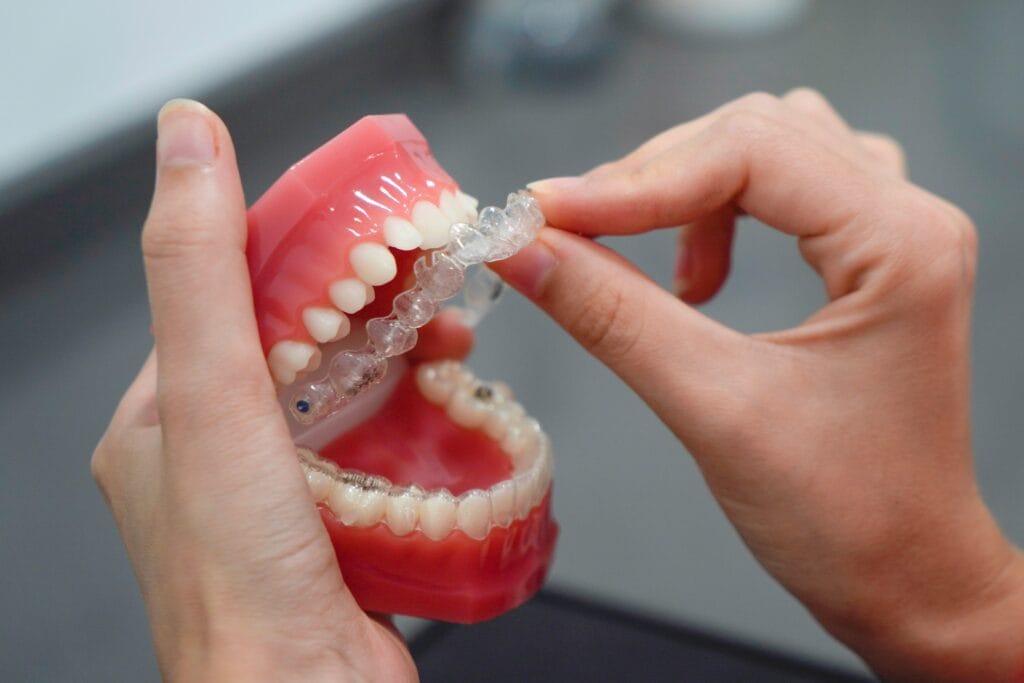Let’s be honest — the appeal of Invisalign is real. Clear aligners, no metal in your mouth, fewer clinic visits… who wouldn’t prefer that? At Ohm Dental, we see many people walk in, excited about finally fixing their smile — and they ask the same question: “Can I get Invisalign?”
The answer isn’t always yes. Invisalign works beautifully for many people, but not for everyone. Some dental problems need more than what aligners can offer — and that’s perfectly okay. Knowing when it might not work is just as important as knowing when it will.
Let’s break it down simply.
Where Invisalign Does a Great Job
If your teeth are slightly crooked, spaced out a bit, or your bite is only mildly off — Invisalign is likely to work well. It’s designed for:
- Small gaps
- Mild crowding
- Slight overbites, underbites, or crossbites
- People who had braces earlier and saw their teeth shift again
We’ve seen fantastic transformations with aligners — especially when patients follow the plan closely.
But Here’s When It Might Fall Short
- When Bite Issues Go Beyond Teeth
If the problem lies in your jaw — not just the teeth — Invisalign usually can’t help much on its own. Think deep overbite, underbite caused by jaw position, or an open bite due to how your jaw developed. These may require braces or even surgery to fix.
- If Teeth Are Severely Twisted or Stuck
A tooth that’s rotated almost completely, or stuck in the gum (impacted), probably won’t move properly with aligners. Braces apply a different kind of pressure — more direct, more targeted.
- When Teeth Are Too Crowded or Gaps Are Too Wide
Invisalign handles minor crowding and gaps well. But if your teeth overlap too much or there’s a big space between them, results can be limited unless it’s part of a bigger treatment plan.
- If You’re Not Consistent
You need to wear your aligners for about 22 hours a day, every day. Taking them out too often? Skipping days? You’ll slow your progress or ruin it entirely. At Ohm Dental, we make sure our patients are prepared for this commitment before getting started.
- If Your Face or Jaw Is Still Developing
Invisalign isn’t usually ideal for younger teens who still have jaw growth ahead. Traditional options allow more control during that crucial development period.
Not a Fit? Don’t Worry — You’ve Got Options
If Invisalign isn’t the best match for your case, don’t feel discouraged. At Ohm Dental, we offer several other treatments that work just as well — sometimes even better.
▸ Traditional Braces
Tried, tested, and highly effective. Braces can treat severe misalignments, jaw issues, and rotated teeth with great accuracy.
▸ Lingual Braces
These fit behind your teeth, keeping them completely hidden. Great if you want the power of braces but not the visibility.
▸ Invisalign Plus (with Attachments or Elastics)
In some cases, we pair Invisalign with rubber bands or bonded attachments to achieve stronger results.
▸ Surgical Treatment
In rare but necessary situations, correcting jaw shape may involve surgery. This isn’t as scary as it sounds — many patients experience life-changing results in both function and appearance.
So, How Do You Know What’s Right?
That’s where we come in. At Ohm Dental, we don’t just hand you a set of aligners and hope for the best. We scan, we examine, and most importantly — we listen. Your comfort, your lifestyle, and your goals matter to us just as much as the clinical part.
We’ll walk you through every option and explain exactly why something will or won’t work for your smile. No pressure, no confusion — just clarity.
Final Word
Invisalign works best when used for the right reasons and in the right situation. But it’s not a cure-all. Understanding its limits is a smart move, not a setback. Luckily, you have more than one path to choose from.
Come visit us at Ohm Dental or Book Your Consultation. Let’s talk through your smile goals and figure out the right solution together — not just the trendiest one.




